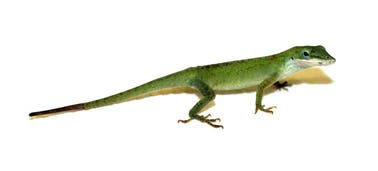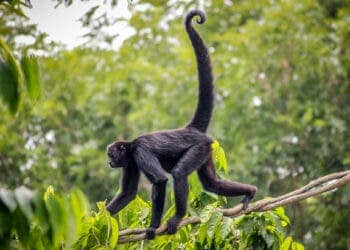It’s one of the most remarkable adaptations in the animal world – growing a tail or a limb. Some lizards do it, salamanders do it, and by learning how they do it, we may soon be able to do it as well; with technology, that is.

A team of researchers have discovered the genetic “recipe” for lizard tail regeneration which, at the very basic level, comes down to the right combination and quantity of genes. To make things even more interesting, we humans have the same genes used in tail regrowth, so the study has a lot of potential.
“Lizards basically share the same toolbox of genes as humans,” said lead author Kenro Kusumi, professor in ASU’s (Arizona State University) School of Life Sciences and associate dean in the College of Liberal Arts and Sciences. “Lizards are the most closely-related animals to humans that can regenerate entire appendages. We discovered that they turn on at least 326 genes in specific regions of the regenerating tail, including genes involved in embryonic development, response to hormonal signals and wound healing.”
The interdisciplinary team studied how the green anole lizard, Anolis carolinensis, can lose its tail when attacked by a predator and then regrow it back. They used next-generation molecular and computer analysis tools to examine the genes turned on in tail regeneration. They found that lizards have quite an unique lengthy pattern of tail regeneration, different to what salamanders do, for example.
“Regeneration is not an instant process,” said Elizabeth Hutchins, a graduate student in ASU’s molecular and cellular biology program and co-author of the paper. “In fact, it takes lizards more than 60 days to regenerate a functional tail. Lizards form a complex regenerating structure with cells growing into tissues at a number of sites along the tail.”
Lizards don’t regenerate the bone in the tail – instead, the bone is replaced by cartilage and fat, losing some of its flexibility and power. But if this growing technique were to be applied in humans, substitutes could be used. The key here was identifying the genetic pathway that enables regeneration – and that’s exactly what scientists did.
“We have identified one type of cell that is important for tissue regeneration,” said Jeanne Wilson-Rawls, co-author and associate professor with ASU’s School of Life Sciences. “Just like in mice and humans, lizards have satellite cells that can grow and develop into skeletal muscle and other tissues.”
“Using next-generation technologies to sequence all the genes expressed during regeneration, we have unlocked the mystery of what genes are needed to regrow the lizard tail,” said Kusumi. “By following the genetic recipe for regeneration that is found in lizards, and then harnessing those same genes in human cells, it may be possible to regrow new cartilage, muscle or even spinal cord in the future.”
The team hopes their findings will one day be applied to medical situations such as spinal cord injuries, birth defects or arthritis.
Source: Arizona State University.






